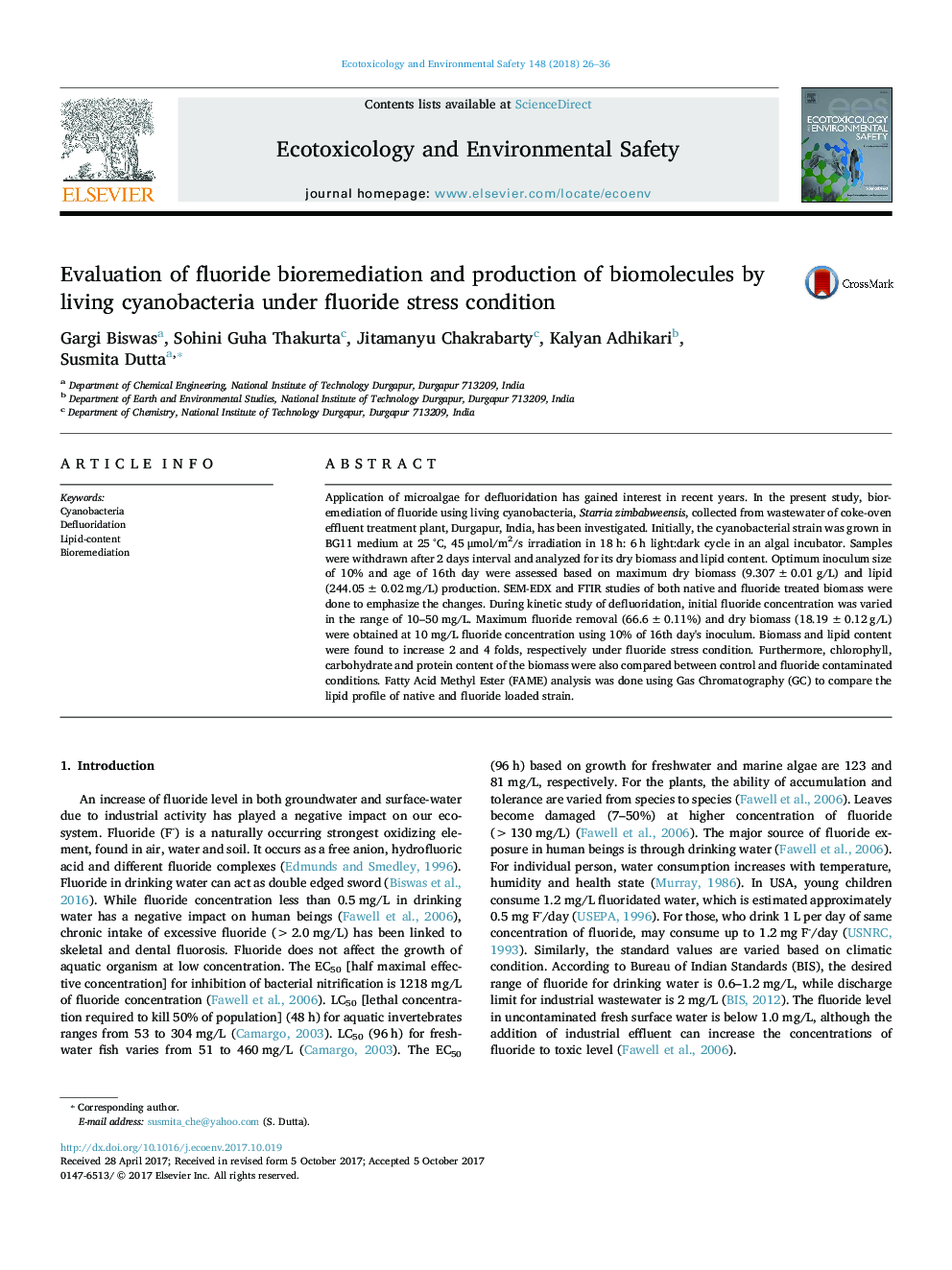| کد مقاله | کد نشریه | سال انتشار | مقاله انگلیسی | نسخه تمام متن |
|---|---|---|---|---|
| 5747456 | 1618916 | 2018 | 11 صفحه PDF | دانلود رایگان |
- Starria zimbabweensis, a cyanobacterial strain, was used for bioremediation of fluoride.
- Growth was increased ~ 2 fold at 10Â mg/L of fluoride concentration, in comparison to BG11 media.
- Bioaccumulation factor being in the range of 0.269-1.736Â L/g showed a good tolerance to fluoride.
Application of microalgae for defluoridation has gained interest in recent years. In the present study, bioremediation of fluoride using living cyanobacteria, Starria zimbabweensis, collected from wastewater of coke-oven effluent treatment plant, Durgapur, India, has been investigated. Initially, the cyanobacterial strain was grown in BG11 medium at 25 °C, 45 μmol/m2/s irradiation in 18 h: 6 h light:dark cycle in an algal incubator. Samples were withdrawn after 2 days interval and analyzed for its dry biomass and lipid content. Optimum inoculum size of 10% and age of 16th day were assessed based on maximum dry biomass (9.307 ± 0.01 g/L) and lipid (244.05 ± 0.02 mg/L) production. SEM-EDX and FTIR studies of both native and fluoride treated biomass were done to emphasize the changes. During kinetic study of defluoridation, initial fluoride concentration was varied in the range of 10-50 mg/L. Maximum fluoride removal (66.6 ± 0.11%) and dry biomass (18.19 ± 0.12 g/L) were obtained at 10 mg/L fluoride concentration using 10% of 16th day's inoculum. Biomass and lipid content were found to increase 2 and 4 folds, respectively under fluoride stress condition. Furthermore, chlorophyll, carbohydrate and protein content of the biomass were also compared between control and fluoride contaminated conditions. Fatty Acid Methyl Ester (FAME) analysis was done using Gas Chromatography (GC) to compare the lipid profile of native and fluoride loaded strain.
Journal: Ecotoxicology and Environmental Safety - Volume 148, February 2018, Pages 26-36
